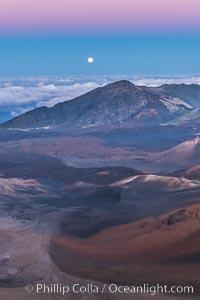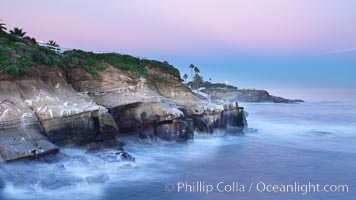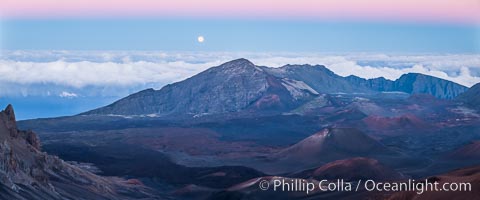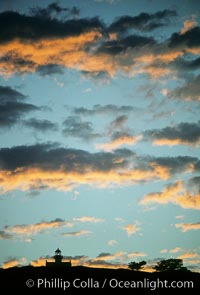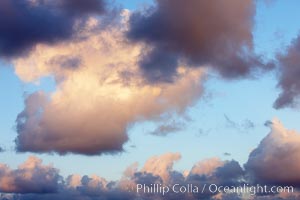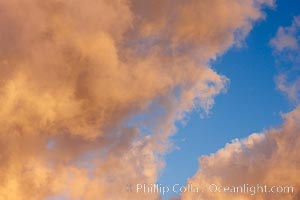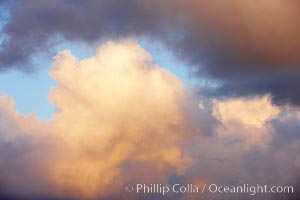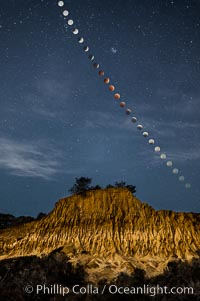
Lunar Eclipse Sequence Over Broken Hill, Torrey Pines State Reserve. While the moon lies in the full shadow of the earth (umbra) it receives only faint, red-tinged light refracted through the Earth's atmosphere. As the moon passes into the penumbra it receives increasing amounts of direct sunlight, eventually leaving the shadow of the Earth altogether. October 8, 2014.
Location: Torrey Pines State Reserve, San Diego, California
Image ID: 29412
Location: Torrey Pines State Reserve, San Diego, California
Image ID: 29412
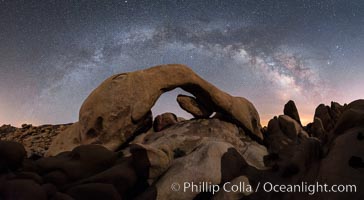
Milky Way during Full Lunar Eclipse over Arch Rock, Joshua Tree National Park, April 4 2015. The arch and surrounding landscape are illuminated by the faint light of the fully-eclipsed blood red moon. Light from the sun has passed obliquely through the Earth's thin atmosphere, taking on a red color, and is then reflected off the moon and reaches the Earth again to light the arch. The intensity of this light is so faint that the Milky Way can be seen clearly at the same time.
Location: Joshua Tree National Park, California
Image ID: 30717
Panorama dimensions: 8903 x 14184
Location: Joshua Tree National Park, California
Image ID: 30717
Panorama dimensions: 8903 x 14184
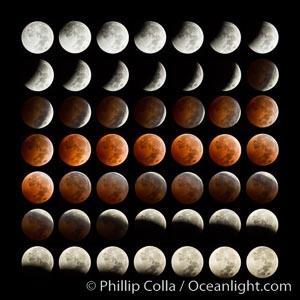
Lunar eclipse sequence. While the moon lies in the full shadow of the earth (umbra) it receives only faint, red-tinged light refracted through the Earth's atmosphere. As the moon passes into the penumbra it receives increasing amounts of direct sunlight, eventually leaving the shadow of the Earth altogether. October 8, 2014.
Image ID: 29411
Panorama dimensions: 8000 x 8000
Image ID: 29411
Panorama dimensions: 8000 x 8000
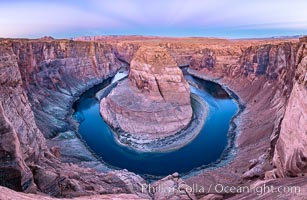
Belt of Venus over Horseshoe Bend on the Colorado River. The Colorado River makes a 180-degree turn at Horseshoe Bend. Here the river has eroded the Navajo sandstone for eons, digging a canyon 1100-feet deep. The Belt of Venus, or anti-twilight arch, is the shadow of the earth cast upon the atmosphere just above the horizon, and occurs a few minutes before sunrise or after sunset.
Location: Page, Arizona
Image ID: 37781
Panorama dimensions: 5719 x 8788
Location: Page, Arizona
Image ID: 37781
Panorama dimensions: 5719 x 8788
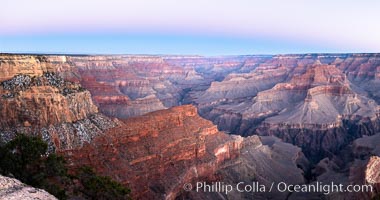
Belt of Venus over Grand Canyon at sunrise, viewed from Hopi Point on the south rim of Grand Canyon National Park. The Belt of Venus, or anti-twilight arch, is the shadow of the earth cast upon the atmosphere just above the horizon, and occurs a few minutes before sunrise or after sunset.
Location: Grand Canyon National Park, Arizona
Image ID: 37765
Panorama dimensions: 5409 x 10272
Location: Grand Canyon National Park, Arizona
Image ID: 37765
Panorama dimensions: 5409 x 10272
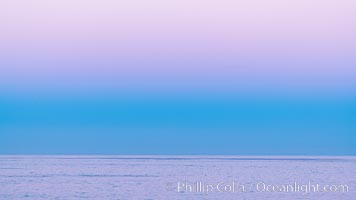
Belt of Venus and Earth Shadow at Dawn. The Belt of Venus is actually alpenglow visible near the horizon during twilight, above the antisolar point. Like alpenglow, the backscatter of reddened sunlight also creates the Belt of Venus. Unlike alpenglow, the sunlight scattered by fine particulates that cause the rosy arch of the Belt shines high in the atmosphere and lasts for a while after sunset or before sunrise.
Location: La Jolla, California
Image ID: 37476
Location: La Jolla, California
Image ID: 37476
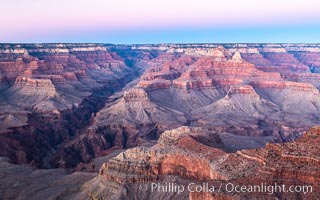
Belt of Venus over Grand Canyon at dusk, sunset, viewed from Mather Point on the south rim of Grand Canyon National Park. The Belt of Venus, or anti-twilight arch, is the shadow of the earth cast upon the atmosphere just above the horizon, and occurs a few minutes before sunrise or after sunset.
Location: Grand Canyon National Park, Arizona
Image ID: 37761
Location: Grand Canyon National Park, Arizona
Image ID: 37761
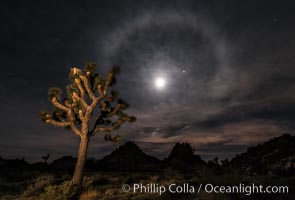
Lunar corona, or moon halo, also known as lunar nimbus, icebow or gloriole, occurring 22 degrees around the moon. Observed during the full lunar eclipse of April 14/15 2014. Planet Mars at upper right, blue star Spica to the right of the moon.
Location: Joshua Tree National Park, California
Image ID: 29229
Location: Joshua Tree National Park, California
Image ID: 29229

Lunar eclipse sequence, showing total eclipse (left) through full moon (right). While the moon lies in the full shadow of the earth (umbra) it receives only faint, red-tinged light refracted through the Earth's atmosphere. As the moon passes into the penumbra it receives increasing amounts of direct sunlight, eventually leaving the shadow of the Earth altogether. August 28, 2007.
Location: Earth Orbit, Solar System, Milky Way Galaxy, The Universe
Image ID: 19391
Panorama dimensions: 1826 x 14162
Location: Earth Orbit, Solar System, Milky Way Galaxy, The Universe
Image ID: 19391
Panorama dimensions: 1826 x 14162
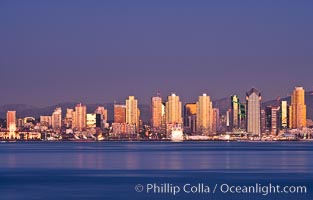
San Diego downtown city skyline and waterfront, sunset reflections and San Diego Bay. Earth-shadow (Belt of Venus) visible in the atmosphere.
Location: San Diego, California
Image ID: 27103
Location: San Diego, California
Image ID: 27103
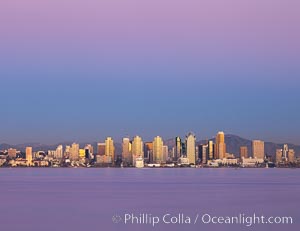
San Diego downtown city skyline and waterfront, sunset reflections and San Diego Bay. Earth-shadow (Belt of Venus) visible in the atmosphere.
Location: San Diego, California
Image ID: 27102
Location: San Diego, California
Image ID: 27102
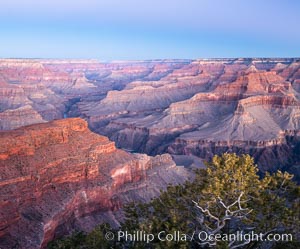
Belt of Venus over Grand Canyon at sunrise, viewed from Hopi Point on the south rim of Grand Canyon National Park. The Belt of Venus, or anti-twilight arch, is the shadow of the earth cast upon the atmosphere just above the horizon, and occurs a few minutes before sunrise or after sunset.
Location: Grand Canyon National Park, Arizona
Image ID: 37764
Location: Grand Canyon National Park, Arizona
Image ID: 37764
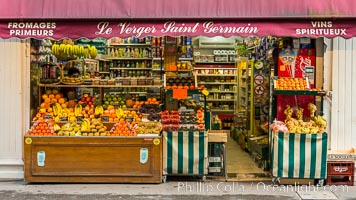
Latin Quarter. The Latin Quarter of Paris is an area in the 5th and parts of the 6th arrondissement of Paris. It is situated on the left bank of the Seine, around the Sorbonne known for student life, lively atmosphere and bistros.
Location: Quartier Latin, Paris, France
Image ID: 28158
Location: Quartier Latin, Paris, France
Image ID: 28158
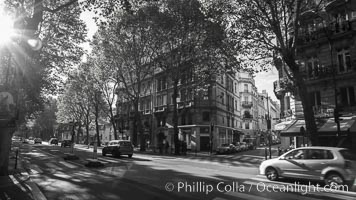
Latin Quarter. The Latin Quarter of Paris is an area in the 5th and parts of the 6th arrondissement of Paris. It is situated on the left bank of the Seine, around the Sorbonne known for student life, lively atmosphere and bistros.
Location: Quartier Latin, Paris, France
Image ID: 28172
Location: Quartier Latin, Paris, France
Image ID: 28172
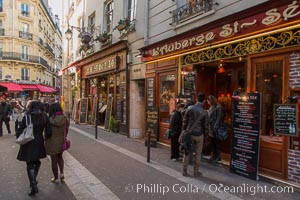
Latin Quarter. The Latin Quarter of Paris is an area in the 5th and parts of the 6th arrondissement of Paris. It is situated on the left bank of the Seine, around the Sorbonne known for student life, lively atmosphere and bistros.
Location: Quartier Latin, Paris, France
Image ID: 28184
Location: Quartier Latin, Paris, France
Image ID: 28184
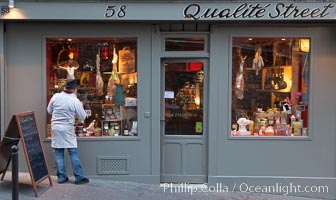
Latin Quarter. The Latin Quarter of Paris is an area in the 5th and parts of the 6th arrondissement of Paris. It is situated on the left bank of the Seine, around the Sorbonne known for student life, lively atmosphere and bistros.
Location: Quartier Latin, Paris, France
Image ID: 28199
Location: Quartier Latin, Paris, France
Image ID: 28199
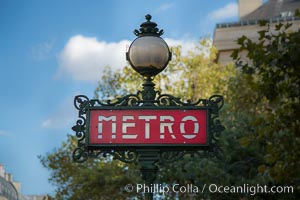
Latin Quarter. The Latin Quarter of Paris is an area in the 5th and parts of the 6th arrondissement of Paris. It is situated on the left bank of the Seine, around the Sorbonne known for student life, lively atmosphere and bistros.
Location: Quartier Latin, Paris, France
Image ID: 28183
Location: Quartier Latin, Paris, France
Image ID: 28183
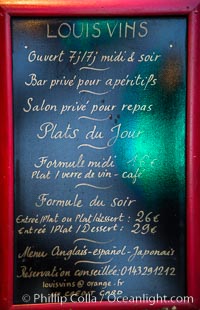
Latin Quarter. The Latin Quarter of Paris is an area in the 5th and parts of the 6th arrondissement of Paris. It is situated on the left bank of the Seine, around the Sorbonne known for student life, lively atmosphere and bistros.
Location: Quartier Latin, Paris, France
Image ID: 28200
Location: Quartier Latin, Paris, France
Image ID: 28200
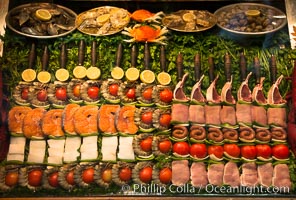
Latin Quarter. The Latin Quarter of Paris is an area in the 5th and parts of the 6th arrondissement of Paris. It is situated on the left bank of the Seine, around the Sorbonne known for student life, lively atmosphere and bistros.
Location: Quartier Latin, Paris, France
Image ID: 28185
Location: Quartier Latin, Paris, France
Image ID: 28185
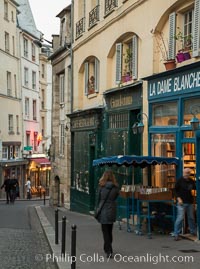
Latin Quarter. The Latin Quarter of Paris is an area in the 5th and parts of the 6th arrondissement of Paris. It is situated on the left bank of the Seine, around the Sorbonne known for student life, lively atmosphere and bistros.
Location: Quartier Latin, Paris, France
Image ID: 28198
Location: Quartier Latin, Paris, France
Image ID: 28198
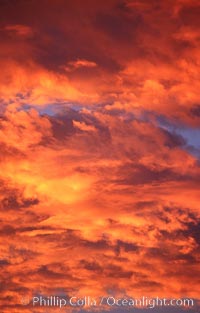
Sunrise light on clouds.
Image ID: 06225
Image ID: 06225

